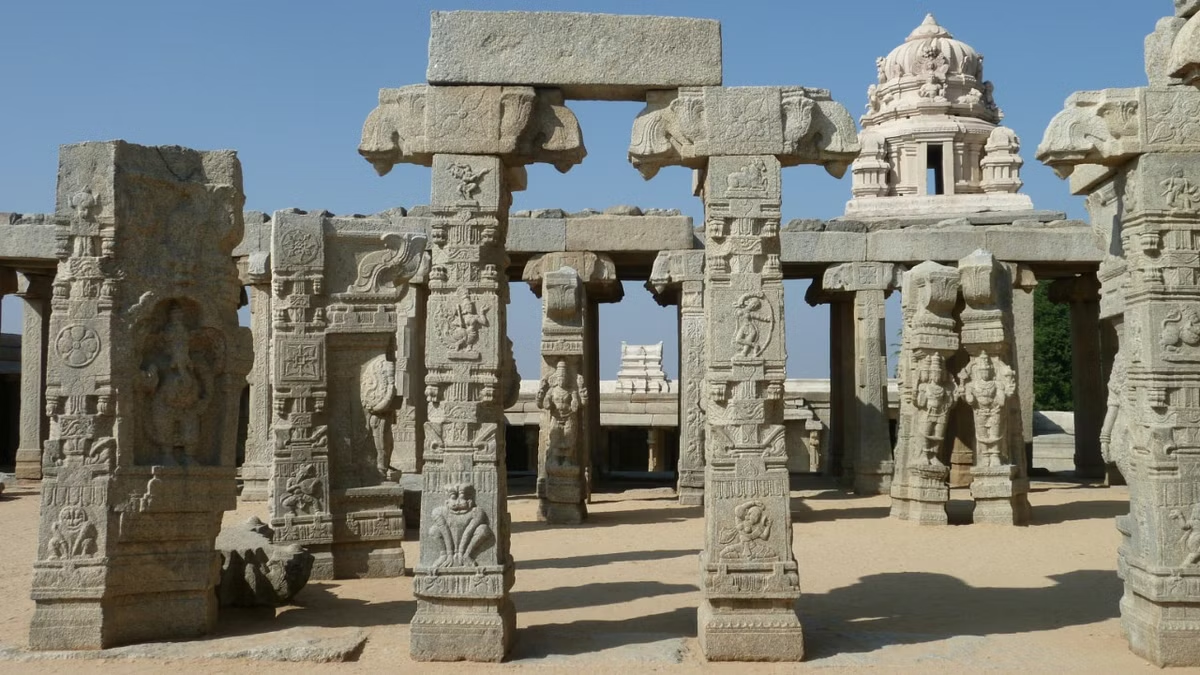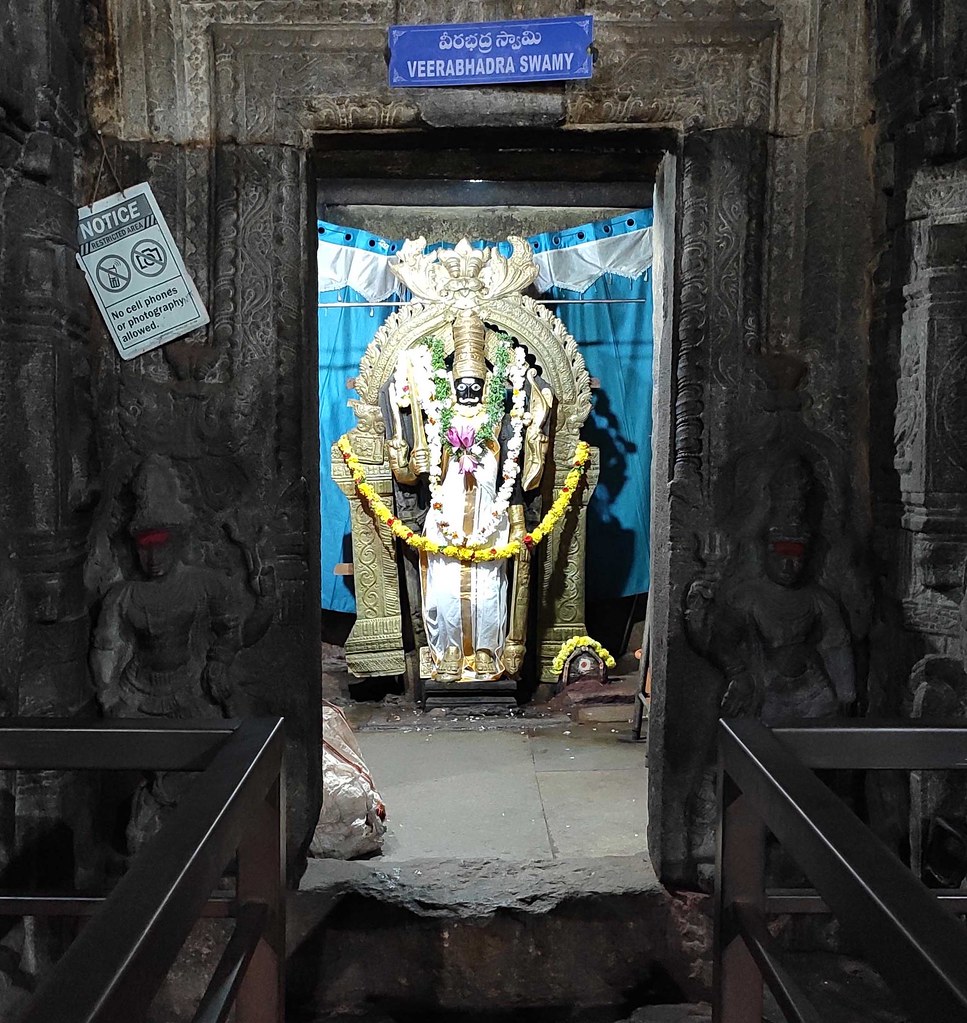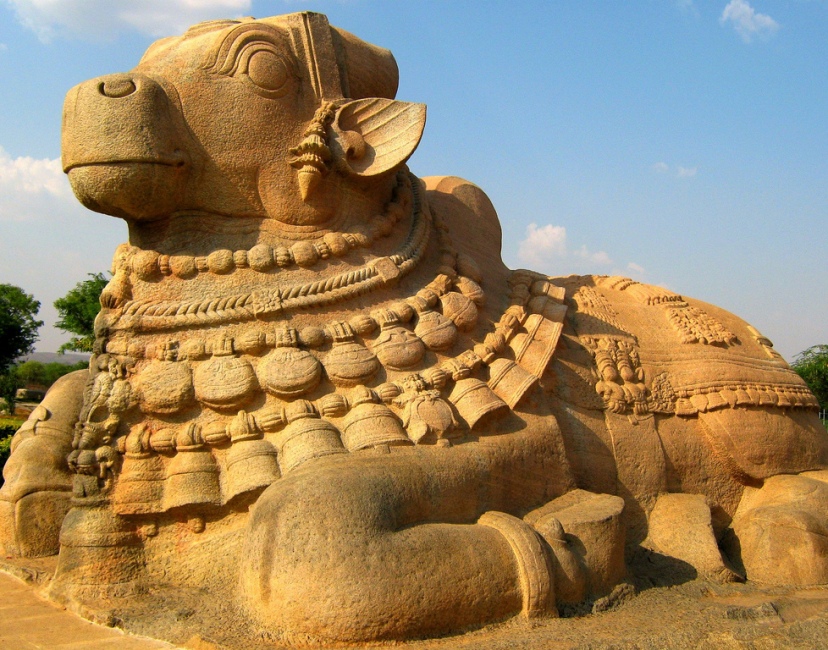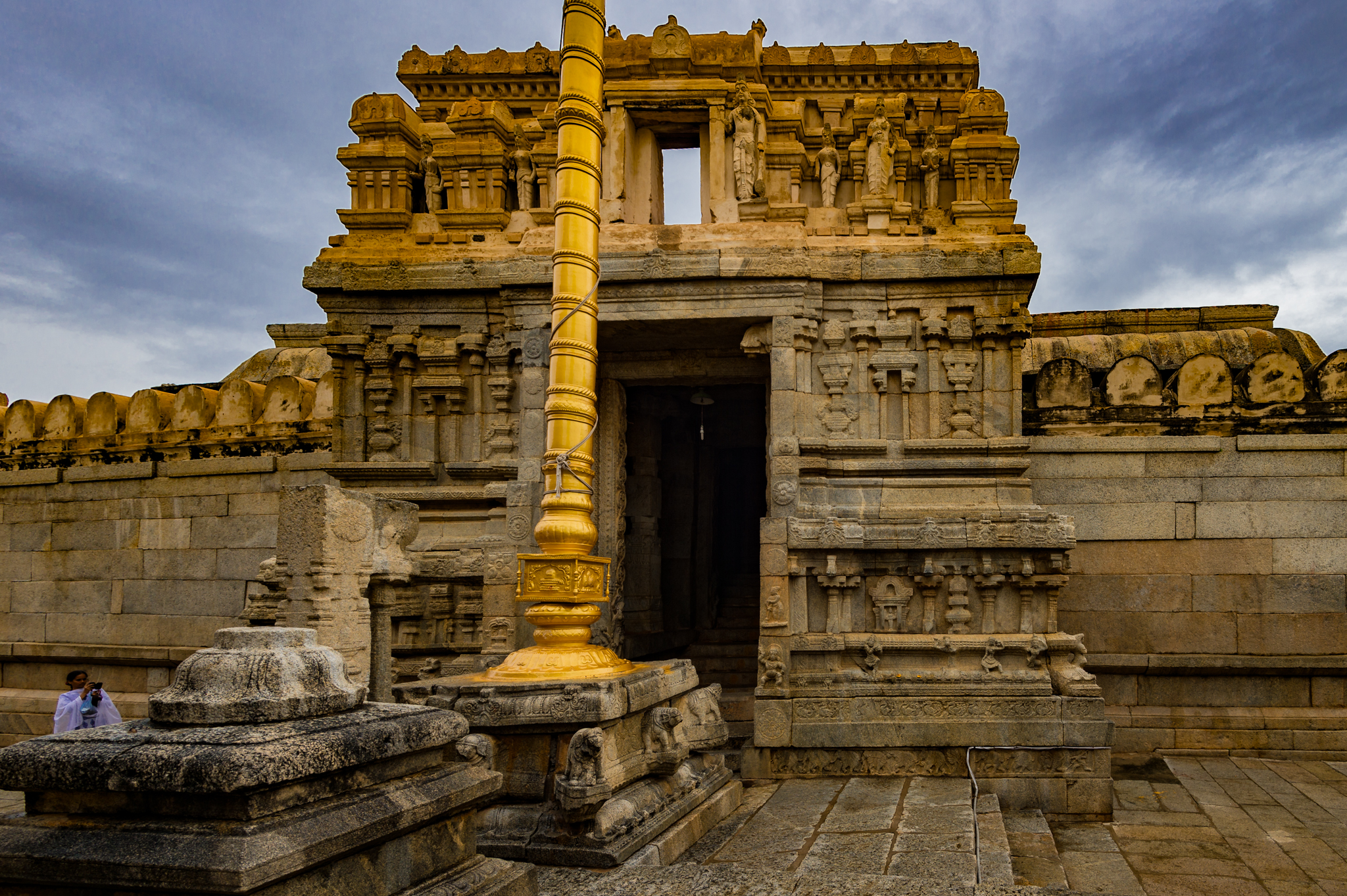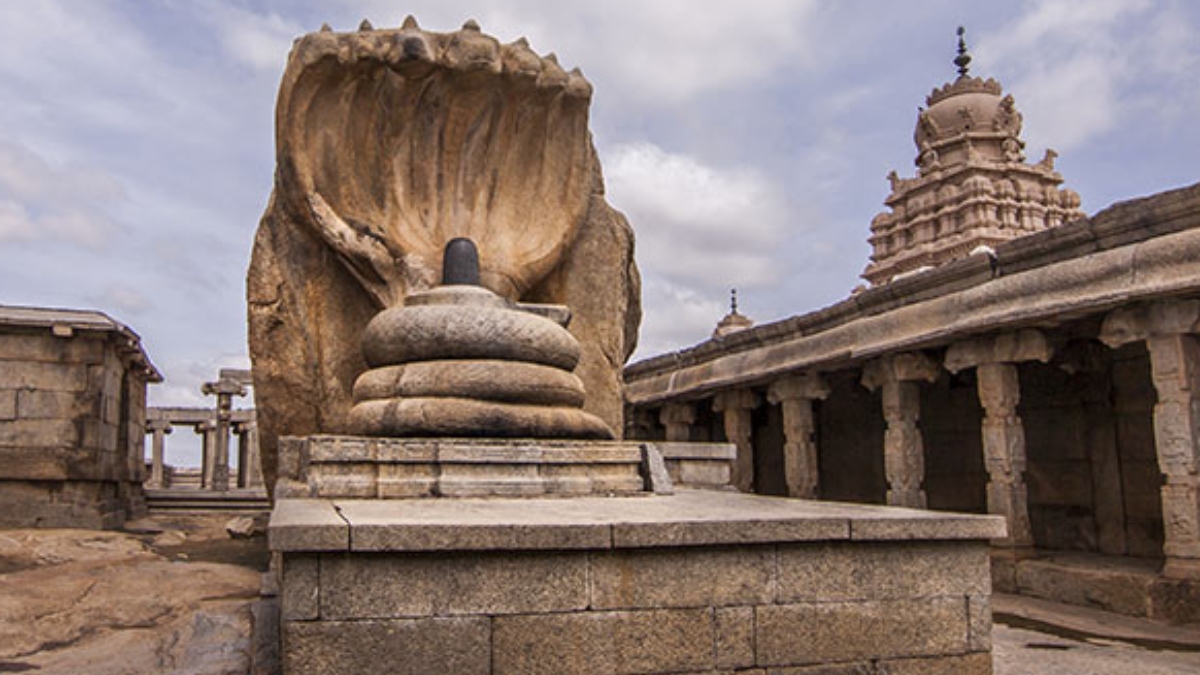The Veerabhadra temple is in Lepakshi in the Anantapur district of the Indian state of Andhra Pradesh. Built in the 16th century, the architectural features of the temple are in the Vijayanagara style with profusion of carvings and paintings at almost every exposed surface of the temple. The fresco paintings are particularly detailed in very bright dresses and colours with scenes of Rama and Krishna from the epic stories of the Ramayana, the Mahabharata and the Puranas and they are well preserved. There is a very large Nandi (bull), mount of Shiva, about 200 metres (660 ft) away from the temple which is carved from a single block of stone, which is said to be one of the largest of its type in the world. The temple has been built on the southern side of Lepakshi town, on a low altitude hillock of a large exposure of granite rock, which is in the shape of a tortoise, and hence known as Kurma Saila. It is 140 kilometres (87 mi) away from Bangalore. The approach from the National Highway NH7 to Hyderabad that takes a branch road at the Karnataka-Andhra Pradesh border leading to Lepakshi, 12 kilometres (7.5 mi) away. Another route to reach the temple is from Hindupur. It is 35 kilometres (22 mi) from Penukonda.And it as in anantapuram district of Andhra Pradesh state. The temple was built in 1530 (1540 is also mentioned) by Virupanna Nayaka and Viranna, both brothers who were Governors under the Vijayanagar Empire during the reign of King Achutaraya, at Penukonda. The cost of building the temple was defrayed by the government. According to Skanda Purana, the temple is one of the divyakshetras, an important pilgrimage site of Lord Shiva. A huge granite Nandi (bull), 20 feet (6.1 m) in height and 30 feet (9.1 m) in length, bedecked with garlands and bells, carved out of a single block stone, is located about 200 metres (660 ft) from the temple, which faces the statue of the serpent in the precincts of the temple.
Gallery
